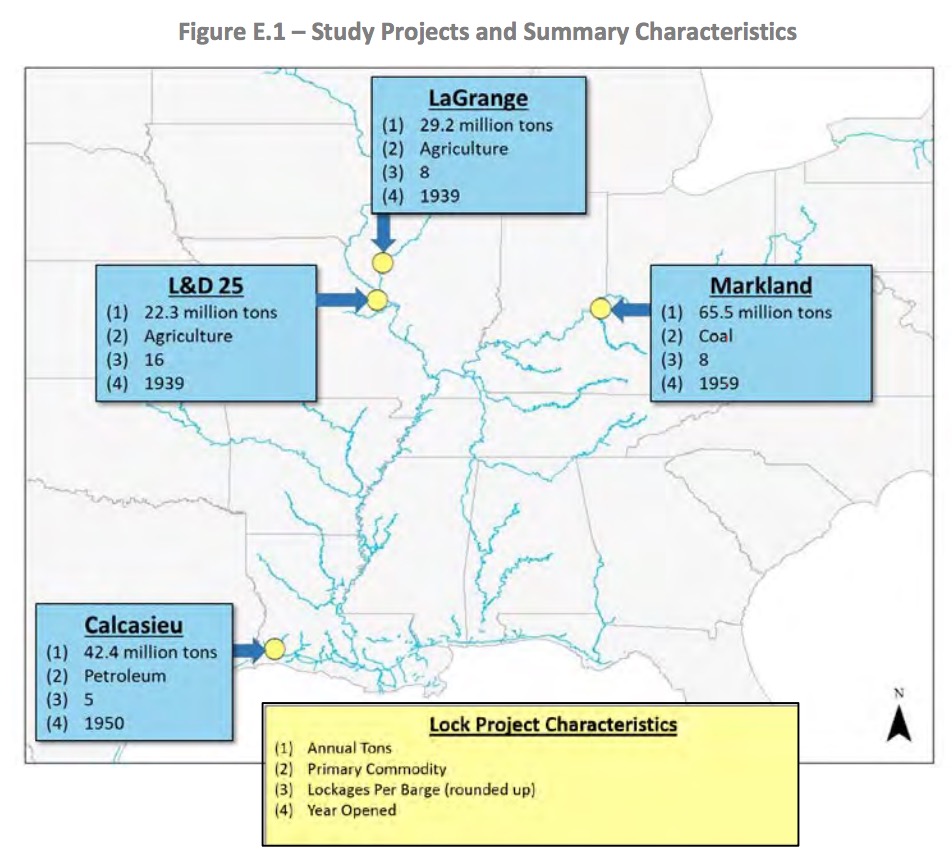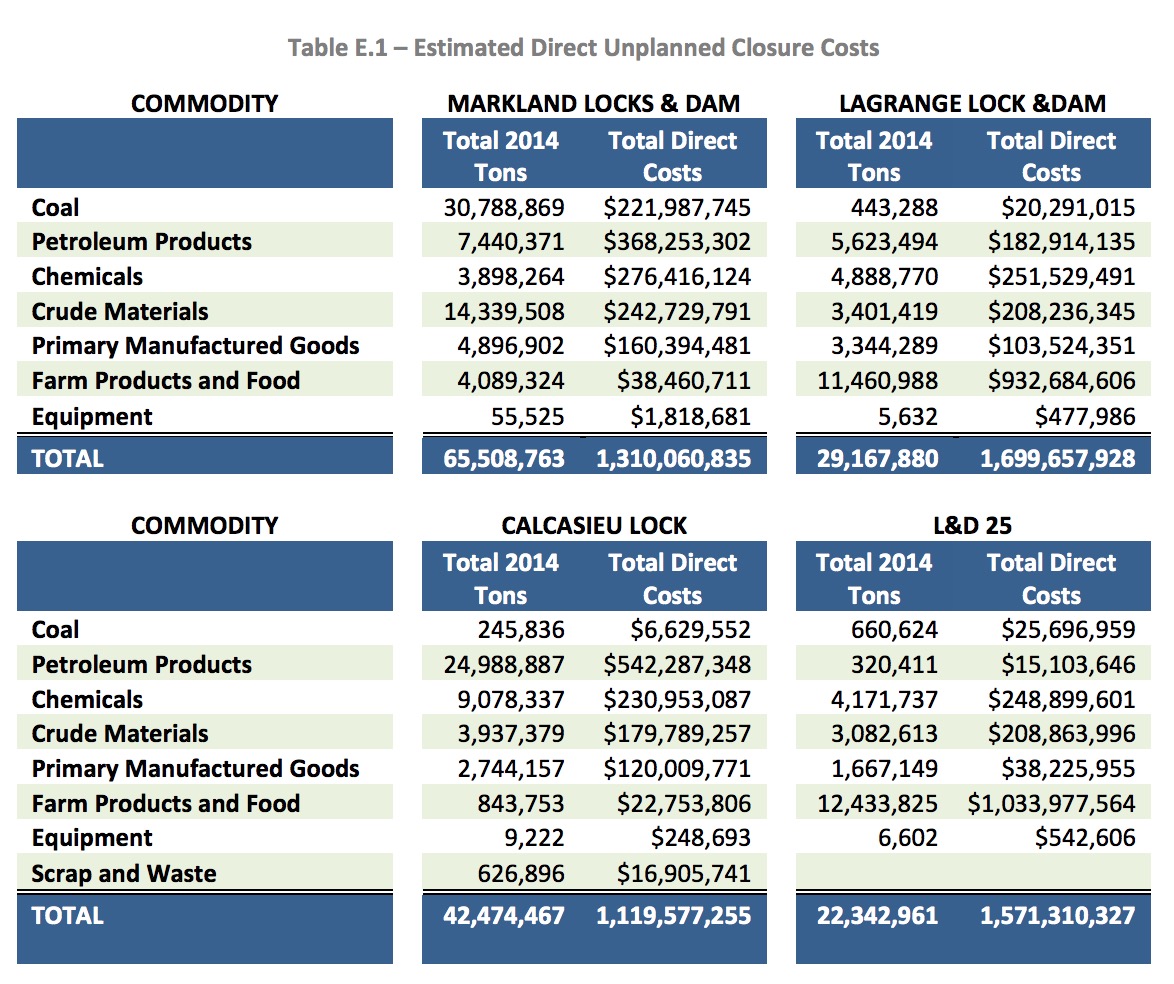NATIONAL WATERWAYS FOUNDATION
U.S. MARITIME ADMINISTRATION
Executive Summary
The summarized work is the result of a study commissioned by the National Waterways Foundation and the U.S. Department of Transportation’s Maritime Administration (MARAD). The goal of this study is to highlight the economic benefits associated with reliable inland navigation.
E.1 Project Context
America’s inland waterway system was essential to the nation’s early colonial prosperity and it has been vital to U.S. commerce ever since. As navigation more fully developed in the 20th century, the waterway network became a perennial contributor to the nation’s economic success. Today, America’s waterways quietly provide an irreplaceable transportation resource that is key to the nation’s global success in the 21st century.
Unfortunately, toward the end of the 20th century, this fundamental part of U.S. transportation infrastructure became more visible, but for all the wrong reasons. Many of the nearly 200 infrastructure projects were reaching their design life of 50 years and choke points were adversely affecting more and more commercial users. The upper Mississippi’s Locks & Dam 26 and the Ohio River’s Locks & Dam 52 are examples.
Today, most navigation projects are more than 75 years old and have suffered from a persistent lack of reinvestment and environmental stresses associated with extreme weather events that magnify the system’s vulnerability.
It is within this context that the National Waterways Foundation and MARAD commissioned this study to explore the expected impacts of an extended unscheduled outage at a number of important Lock and Dam projects.
E.2 Lock and Dam Projects Selected for Detailed Analysis
In order to assess the impact of lock availability and outages, the study team developed and used a methodology to identify a small subset of locks for closer analysis. The initial screening approach included a carefully reconciled cross-section of data describing the characteristics and performance of roughly 170 navigation locks located throughout the nation’s interior navigation system. The study team prepared and presented this information to the study’s sponsors who then selected four locks for further study based on their characteristics and performance metrics. The map below indicates the locks selected and includes several of the key characteristics of the lock reliant traffic.
Of particular note were new metrics to assess a lock’s importance to the overall network. One such metric, noted on the map below for each project, describes the average number of locks on the system that an individual loaded barge traversing the subject lock passes through during a single movement (represented as System Lockages/Project Lockage). An additional measure shows the traffic in the pools above and below the lock that originates or terminate in the pool but does not transit the lock. While this study did not investigate the particular modalities of an unscheduled outage, it is possible that the outage could be accompanied by impacts on the pool traffic as well.
E.3 Direct Shipper Supply Chain Cost Burdens from an Unscheduled Closure
Estimating the direct efficiency losses associated with an unplanned lock closure provided the core information on which further analysis is built. These cost estimates were derived through methods that adhere to the same Principles and Guidelines that govern U.S. Army Corps of Engineers’ navigation studies.
For each lock examined, the analysis compares an estimate of each shipper’s current costs for waterway-inclusive movements to the cost of the next best available modal alternative. Three existing models were employed that allowed a comparison of the costs associated with the use of barge service against the cost to make such a movement by rail and/or truck. For each of the four locks analyzed, the model estimates predicted the Direct Shipper Supply Chain Cost Burden if barge service becomes unavailable and, at each location, these costs would be expected to exceed $1 billion per year, as described in the Table below:
Download full version (PDF): The Impacts of Unscheduled Lock Outages
About the National Waterways Foundation
www.nationalwaterwaysfoundation.org
The National Waterways Foundation is a center for research and learning where industry leaders and thinkers can address public policy issues related to America’s inland waterways system. Through studies, education and training programs, grants, forums and similar activities, the Foundation helps the public to understand how to maintain our waterways system, enhance its capabilities and promote its value in the years ahead.
About the U.S. Maritime Administration
www.marad.dot.gov
The Maritime Administration is the agency within the U.S. Department of Transportation dealing with waterborne transportation. Its programs promote the use of waterborne transportation and its seamless integration with other segments of the transportation system, and the viability of the U.S. merchant marine. The Maritime Administration works in many areas involving ships and shipping, shipbuilding, port operations, vessel operations, national security, environment, and safety.
Tags: Center for Transportation Research, Locks, MARAD, National Waterways Foundation, Rivers, Shipping, U.S. Maritime Administration, University of Tennessee, Vanderbilt Engineering Center for Transportation and Operational Resiliency








 RSS Feed
RSS Feed